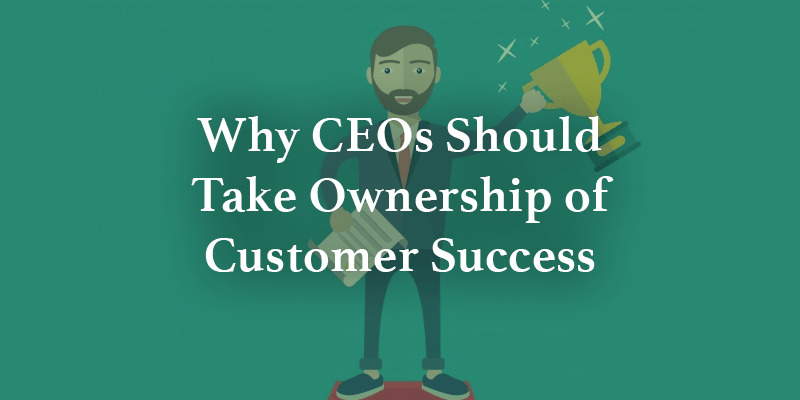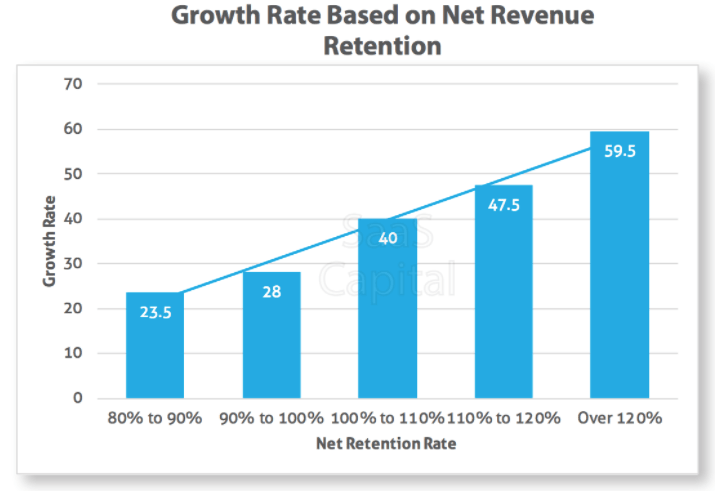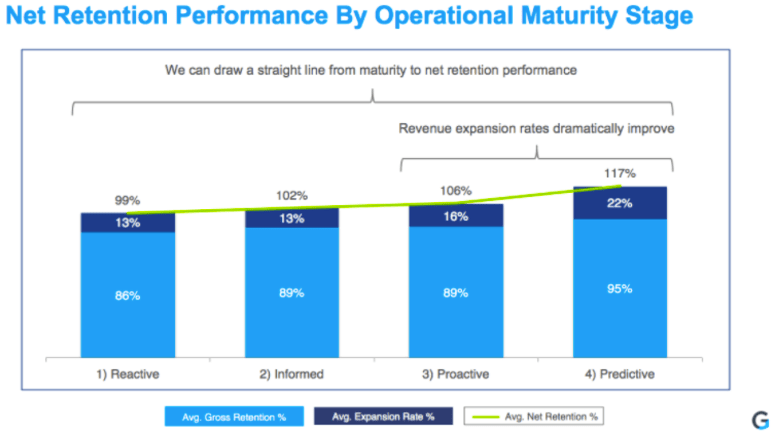
“Ownership” is one of the most overused terms in modern work; it shows up in the business buzzword dictionary right next to “synergy” and “taking things offline.” In a typical large company, you can find at least a dozen people that “own” hot initiatives like “the cloud” or “our artificial intelligence strategy.” Strangely, when things go wrong, owners are harder to find.
Furthermore, no CEO that I know is eager to “own” more themselves. Most are looking to “recruit,” “delegate,” and “empower,” to continue the buzzword bingo.
In the early days of Customer Success, this has served companies well. Leading CEOs have:
- Recruited a leader of Customer Success.
- Delegated core functions like Adoption to said leader.
- In some cases, Empowered the leader with resources, a “seat at that table” (cut it out already with the lingo!), and occasionally a C-level title like “Chief Customer Officer.”
But I’m here to tell you that if you stop there, you will at best be mediocre at Customer Success. At worst, you’ll backslide into your old habits.
What we’ve learned at Gainsight from working with hundreds of companies on CS strategy is that Customer Success starts as a department and function but only thrives as a company-wide transformation. And this transformation requires the CEO personally owning it.
And in the past month, I’ve spent half a day each with half a dozen public company management teams (CEO down) working on Customer Success strategy with CEOs that clearly feel ownership.
If you’re a CEO reading this, you’re probably thinking, “How can I own anything more?” You’ve already been told to own your product destiny, your growth plans, your capital strategy, and your culture. Heck, at Gainsight, I even own our rap video offer letter strategy.
My challenge to you is “how can you not own it?” The future of your company depends on it.
Customer Success Is Your New Customer Differentiation
For decades, business differentiation across industries has come in two major flavors:
- Product: Your ability to cost-effectively build differentiated products
- Sales: Your ability to cost-effectively reach customers with your products
But fast forward to today:
- Product: Product differentiation is decreasing rapidly as the cost to build things (software, physical products) declines.
- Sales: Sales differentiation is going down as customers become more empowered and informed buyers, and as business models (e.g., subscription, pay-per-use, outcomes-based) shift risk from buyers to sellers.
In the new world of customer empowerment, clients don’t care about your products and they don’t care about your sales pitch. They just care about the outcomes they are going to get from your company.
Forward-thinking companies will jump on this and make Customer Success the new differentiator. In some cases, traditional laggards in industries can use Customer Success to leapfrog incumbent leaders.
As evidence of this, many of the leading C-level influencers are starting to write about Customer Success:
- McKinsey recently wrote about Customer Success being a key to growth strategies.
- Gartner recently published about Customer Success being a core part of a Customer Experience strategy.
- Forrester commented that “Customer Success Management Is The Key To Outstanding B2B Customer Experiences.”
Your Investors Are Onto This
Again, if you’re reasonably sophisticated, you know about the strong correlation between retention and growth. The math is simple in that you can grow faster if you keep your clients and get them to spend more. But when you look at the correlations, it’s still striking. Below is an analysis from SaaS Capital.
Lincoln Murphy has written a nice roundup of how all of this adds up to higher shareholder valuations.
What’s really interesting is how savvy investors are becoming about Customer Success as a core part of business models.
OpenView Ventures created a nice summary of how Venture Capitalists look at Customer Success as a part of diligence. Investment bank Pacific Crest published a comprehensive and eye-opening roundup of all of the ways public companies report retention rates.
And as I talk to investors, they are getting more sophisticated in their understanding of this area:
- They are trying to dive deeper than “net retention,” where upsell can often mask churn issues.
- They are trying to look at not just aggregate metrics but cohort-based metrics so they can see if the situation is getting better or worse.
- They are realizing that the incremental operating profit from retention and upsell is much higher than that from new business, meaning Customer Success is a key to profitability and cash flow.
Customer Success Is Inherently Cross-functional
As I mentioned, the early days of Customer Success start with a function and a department. The most common questions I get from CEOs are around what the CS leader should own. Should they own renewals? Should they own expansion?
But as companies dig in, no matter how much the CS leader owns, the Customer Success opportunity is much bigger than that person’s domain.
Customer Success, when approached strategically, reimagines the way companies think about product development, marketing, sales, and other functions.
The best company-wide transformations bring all of the stakeholders together around Customer Success:
- Product
- How can Product be instrumented to provide more data to inform Customer Success?
- How can Customer Success strategies get built into the product?
- Marketing
- How can we take learnings from Customer Success to inform our “ideal customer” to market to?
- How can we use a lifecycle marketing approach to scalably nurture existing clients toward adoption, expansion, and retention?
- How can we use Customer Success to identify customer advocates and indirectly drive new logo growth?
- Sales
- How can Customer Success processes more seamlessly drive upsell and cross-sell for Sales?
- How can Customer Success increased perceived value to maximize renewal rates and pricing power?
- How can Customer Success insights help arm reps to sell with more authenticity and to a more targeted customer set?
- Channel
- What role does our channel play in Customer Success?
- How do we incent and enable partners to invest in this area?
- What data do we need to expose to partners? What do we need to get from them?
- Services
- How can onboarding drive toward outcomes and value—not just project closure?
- What Customer Success capabilities can be offered “for fee” instead of “for free?”
- How can Customer Success identify opportunities for Services sales?
- Support
- How can the support team help to scale Customer Success?
- How can the support team be aware of the larger context around a case?
- How can the support team use Customer Success insights to prioritize cases?
- IT
- What data do we need to understand Customer Success?
- How can business processes come together around Customer Success?
- How do various systems align around our needs?
It Pays to Own Customer Success
We’ve benchmarked hundreds of mid-sized and large companies around Customer Success operational maturity. In this process, we place customers into one of four segments (Reactive, Informed, Proactive, or Predictive) based whether Customer Success is (1) non-existent, (2) a function, (3) cross-functional, or (4) truly systematized. And we found a straight-line correlation in gross and net retention improvements based upon Customer Success operational maturity. In short, make Customer Success cross-functional and you’ll increase growth by 18 points and operating margins by a good chunk of that.
Every company in “Level 4” has a CEO that takes Customer Success as a personal charter.
There Is A Template for How
We’ve put together a model, which we call “The Helix,” for how to think about Customer Success company-wide as the growth engine. The core insight involves flipping organizational ownership from an assembly-line model where customers are “handed off” from one team to another to a cross-functional model where teams partner together on an integrated view of the customer journey:
You Can Take Tangible Next Steps
So where do you go from here?
We’ve done dozens of “Success Briefings” where we get management teams together to talk about Customer Success cross-functionally. We bring other departments up to speed on the business imperative and then introduce some models for collaboration across functions. Whether Gainsight hosts it or you do it yourself, we highly recommend a cross-functional discussion around how Customer Success changes every role.
From there, you can define some tangible next steps:
- Journey: Many companies decide to collaborate around a codified and instrumented view of the ideal customer journey in this new model.
- Health Score: Similarly, teams often rally around defining a metrics-oriented view of what a healthy customer looks like.
- Charters: Some execs focus on redefining charters (and related KPIs) in this new world of a shared ownership of the customer journey.
It’s so important the CEOs start taking personal ownership of their customers’ success that I’m taking personal ownership in making it happen. I’m serious. If you’re a CEO and you want to own Customer Success, I want to help you.
Just click here and I’ll reach back out to you over email in the next couple of days to get a dialogue started.






